
The packaging industry thrives on innovation, making it challenging yet rewarding for creative thinkers to bring their ideas to market.
Today, we will start our tutorial with the packaging of functional beverages.
Step 1: Energy Drink Bottle Pioneers: Inspiration & Examples
1-1 Coca-Cola
Brand Positioning: Coca-Cola is positioned as a timeless, refreshing beverage for happiness and sharing. This differs from many energy drink brands that focus on performance and a quick boost. Both are beverages, but Coca-Cola offers simple refreshment, while an energy drink provides functional energy.
Visual Aspect: Coca-Cola’s packaging is iconic: vibrant red, recognizable logo, classic contour bottle. This visual language contrasts with that of an energy drink, which uses brighter colors and sharper designs to convey energy. A Coca-Cola bottle is visually very different from a typical sleek energy drink can.
Material & Practicability: Coca-Cola uses lightweight, recyclable materials like aluminum cans and PET bottles, similar to the packaging often used by energy drink brands. Both benefit from these portable, resilient options, though brand aesthetics vary widely.
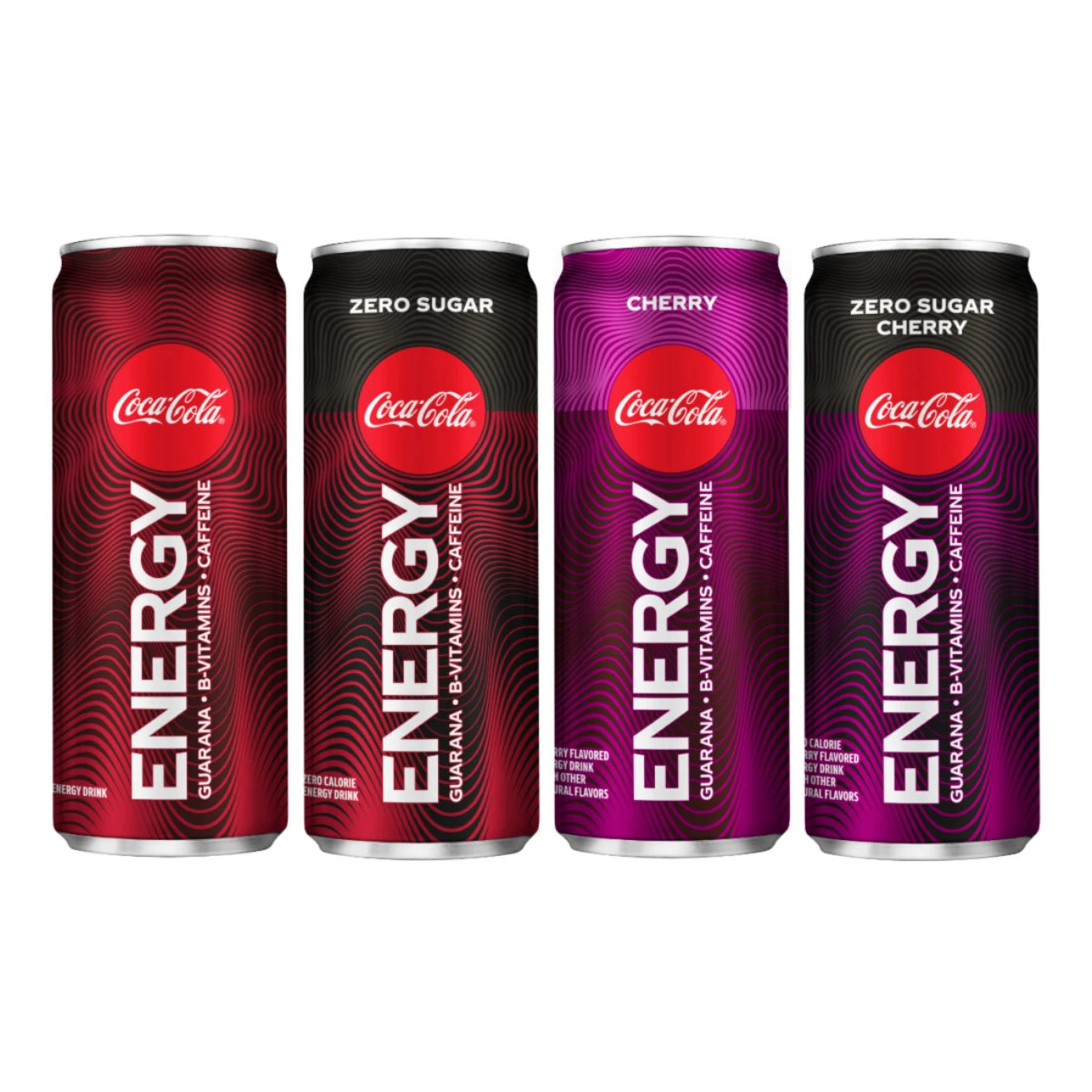
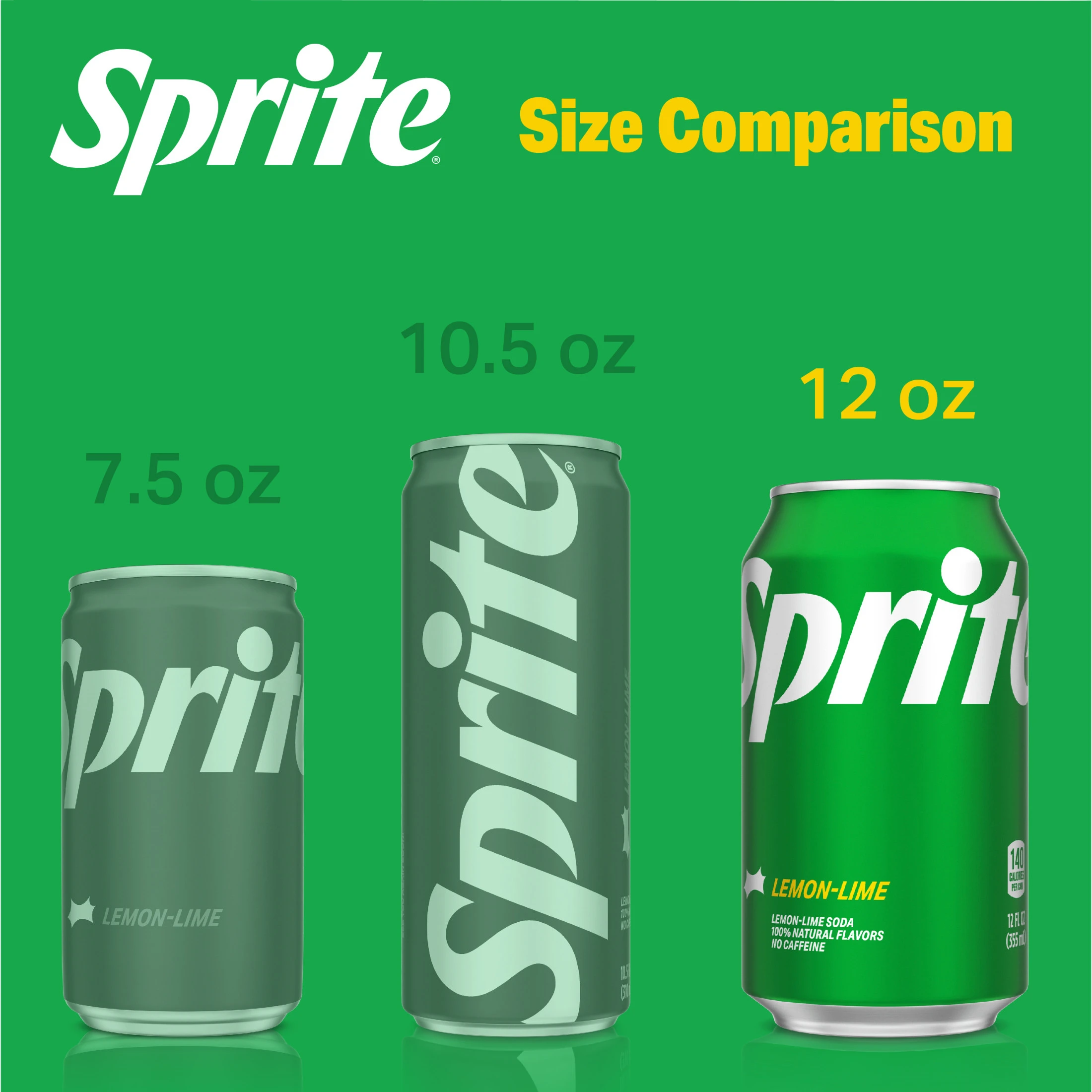
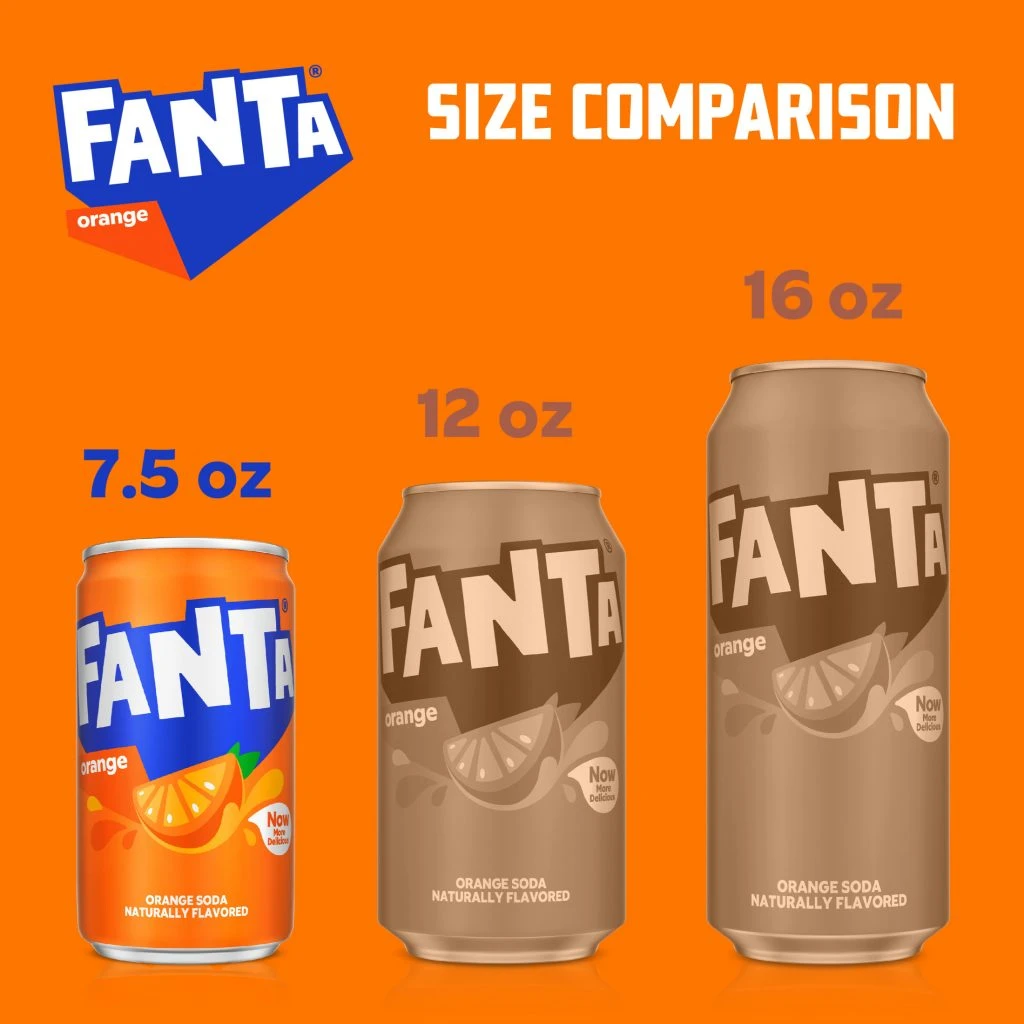
1-2 Pepsi
Brand Positioning: Pepsi projects a youthful, vibrant image centered around fun and spontaneity, appealing to an adventurous lifestyle. In contrast, energy drinks focus on peak performance and immediate energy. While both are beverages, Pepsi emphasizes lifestyle, while energy drinks prioritize function.
Visual Aspect: Pepsi’s packaging is bold and vibrant, featuring dynamic colors and its iconic circular logo, which conveys energy and refreshment. In contrast, energy drink brands typically use sharp lines and intense graphics that emphasize power, resulting in a stark difference from Pepsi’s design.
Material & Practicability: Pepsi typically uses lightweight, recyclable aluminum cans or plastic bottles, designed for portability and freshness, similar to many energy drink options. Both benefit from the convenience of such packaging, though the aesthetics differ to target distinct consumers.
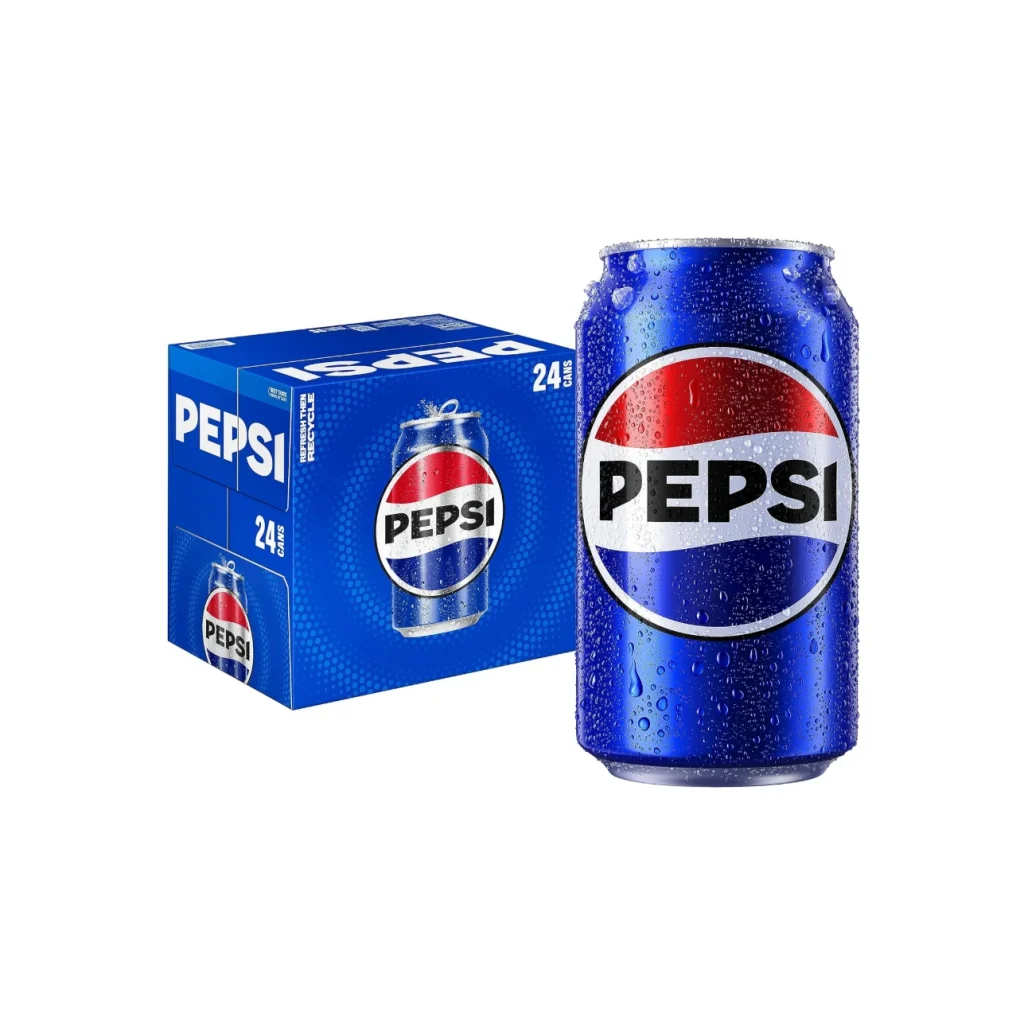
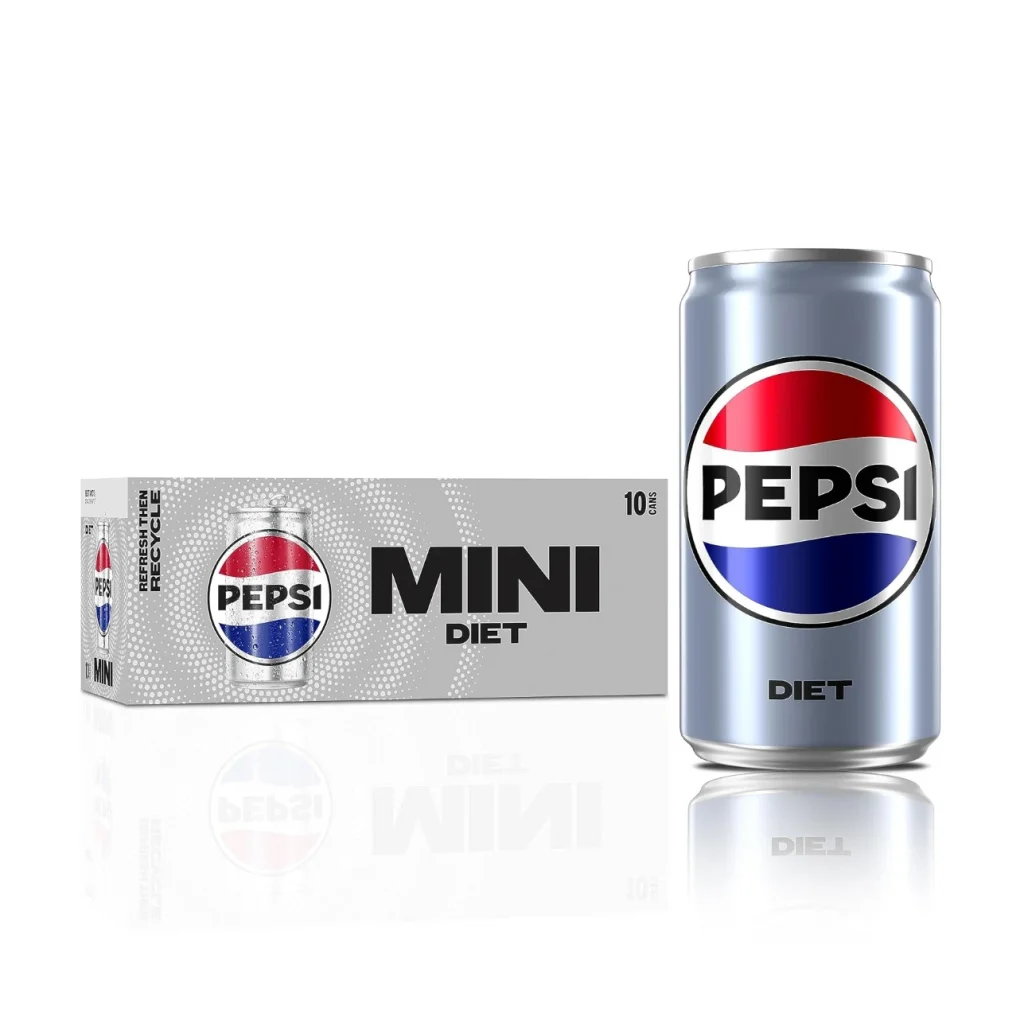
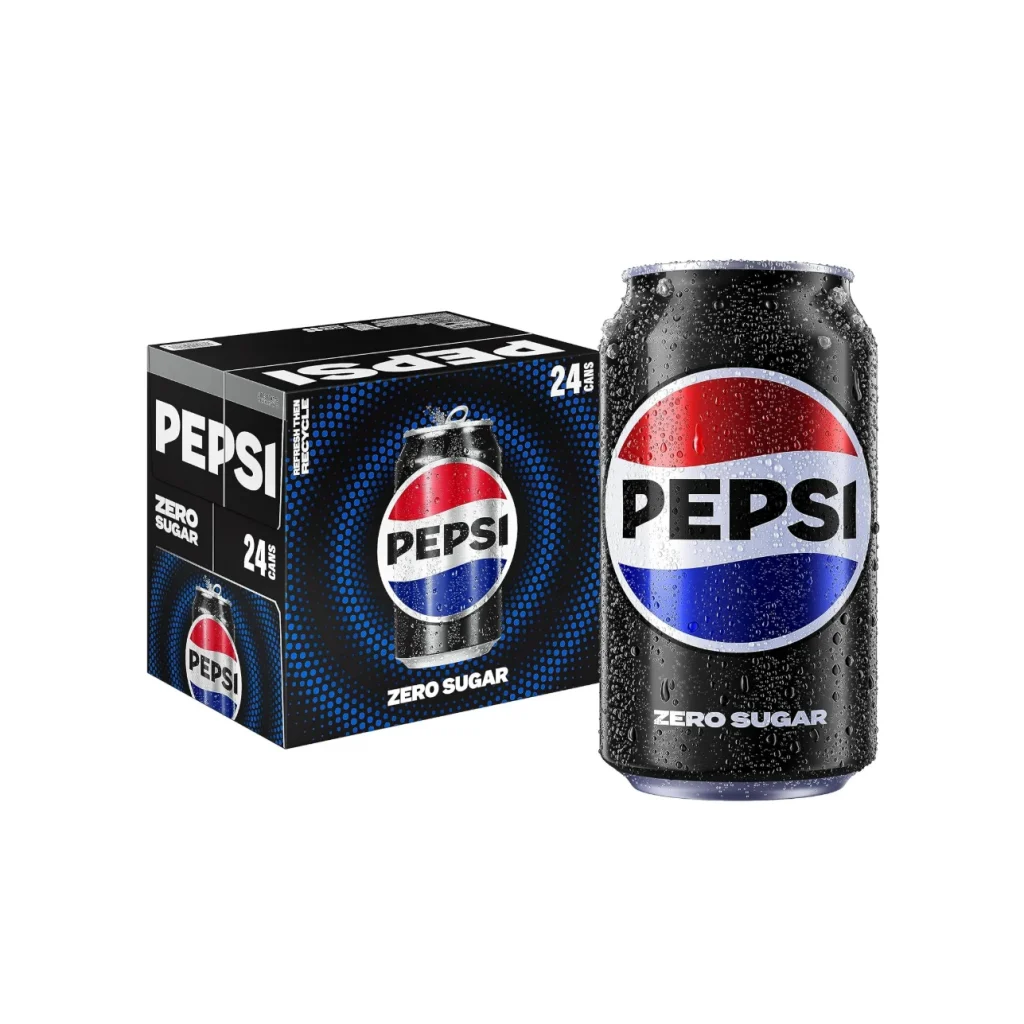
1-3 Red Bull Energy Drink Bottle
Brand positioning:Red Bull positions itself as an energy drink brand that enhances performance and boosts energy for active, adventurous individuals.
Visual aspect:Red Bull’s sleek, vibrant packaging combines striking colors and a dynamic logo to convey energy and excitement. This sharply contrasts with Coca-Cola’s classic, iconic design. The look of an energy drink like Red Bull is all about intensity, versus Coca-Cola’s timeless feel.
Material and practicability:Red Bull’s energy drink packaging is typically made from lightweight aluminum, which is highly recyclable and helps to preserve the drink’s freshness and carbonation.
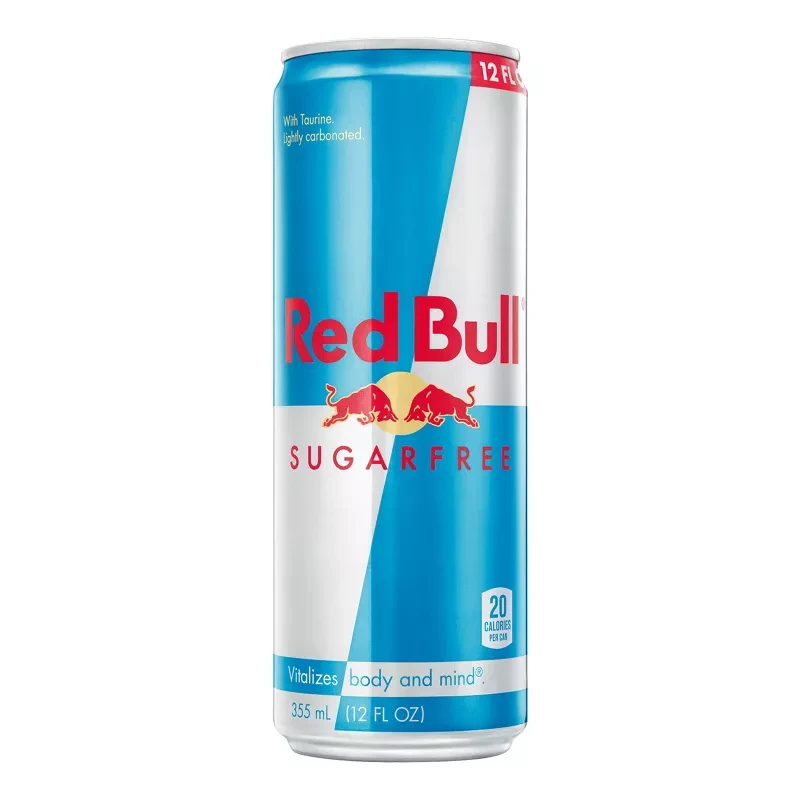
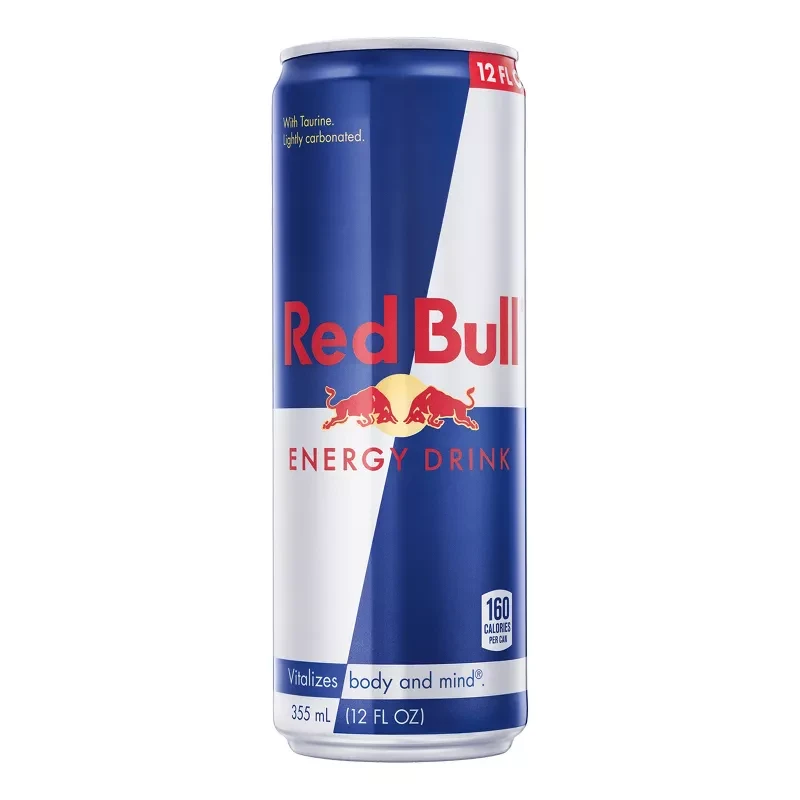
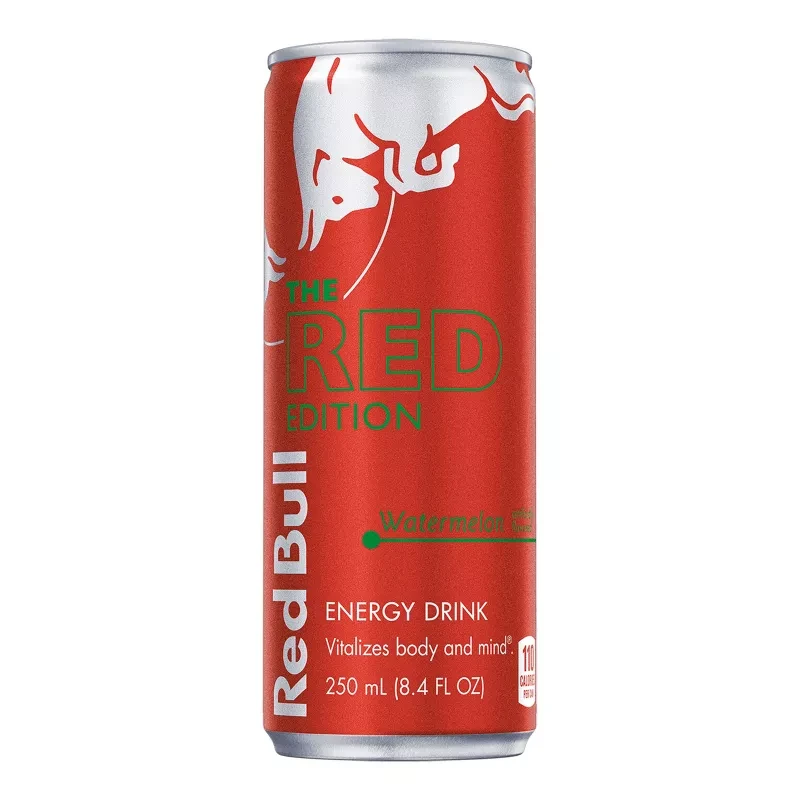
1-4 Danone
Brand positioning:Danone’s functional drinks focus on health, providing essential nutrients and well-being support. This contrasts with energy drink brands focused on quick energy boosts, not long-term health. Danone prioritizes nutrition, while an energy drink focuses on performance.
Visual aspect:Danone’s packaging uses clean, modern designs emphasizing freshness and sustainability. This differs from the often bold, intense designs of an energy drink. The visual language of Danone is about health, whereas an energy drink is about action.
Material and practicability:Danone uses eco-friendly, recyclable packaging. Unlike a standard energy drink can, Danone prioritizes sustainability in its material choices.
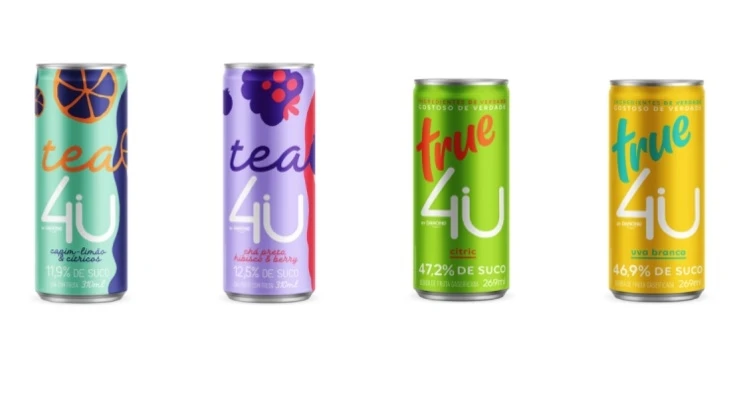
1-5 Dr Pepper Snapple Group
Brand positioning:Dr Pepper Snapple Group positions its drinks as innovative refreshments for lifestyle and wellness, emphasizing unique flavors. This contrasts with an energy drink, which targets immediate energy, not general refreshment. They offer flavored hydration, while an energy drink provides a functional boost.
Visual aspect:Their packaging features bold colors and distinctive graphics, highlighting a vibrant, refreshing brand. This contrasts with the often intense look of an energy drink. Their style is about flavor and refreshment versus an energy drink’s focus on power.
Material and practicability:They use lightweight, recyclable materials to promote sustainability and durability. This is similar to many soft drinks and some energy drink options, prioritizing both product protection and environmental considerations.
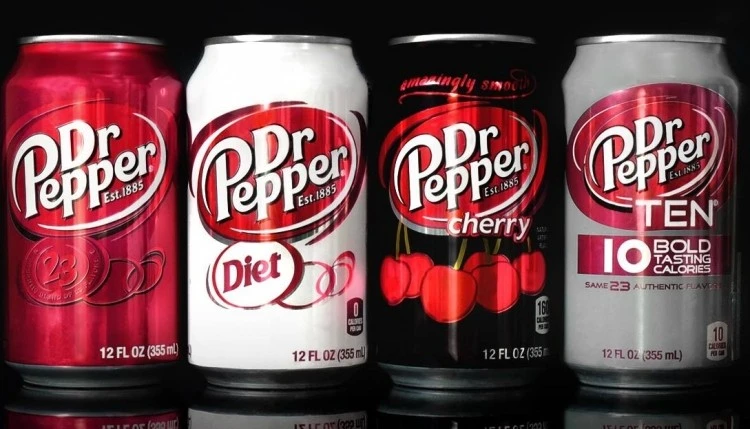
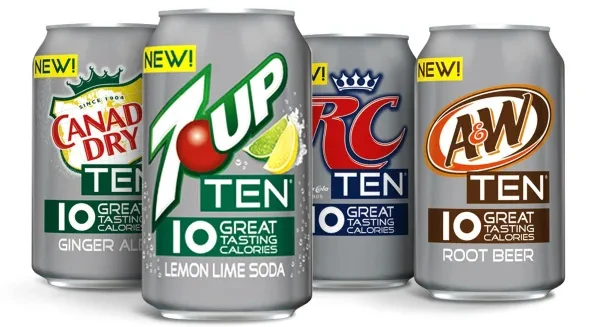
Step 2:The Right Model for Your Bottle of Energy Drink
To design an energy drink bottle,visit Pacdora and search for “Can Mockup” to find some suitable models for designing Energy Drink Bottle , which will facilitate the subsequent presentation of design effects.
Click the images below to try these models for free.
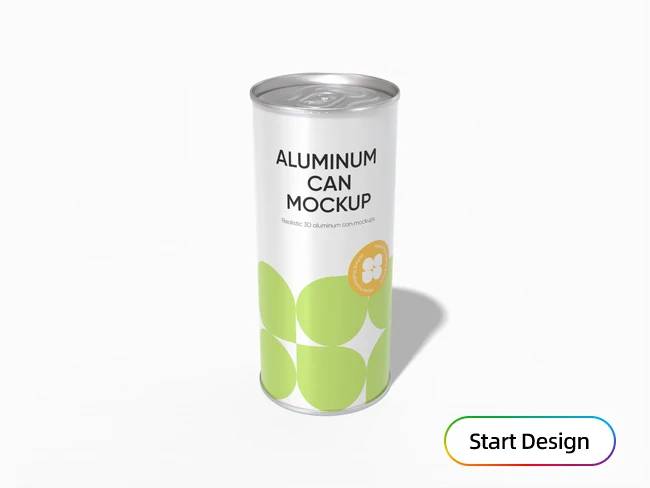
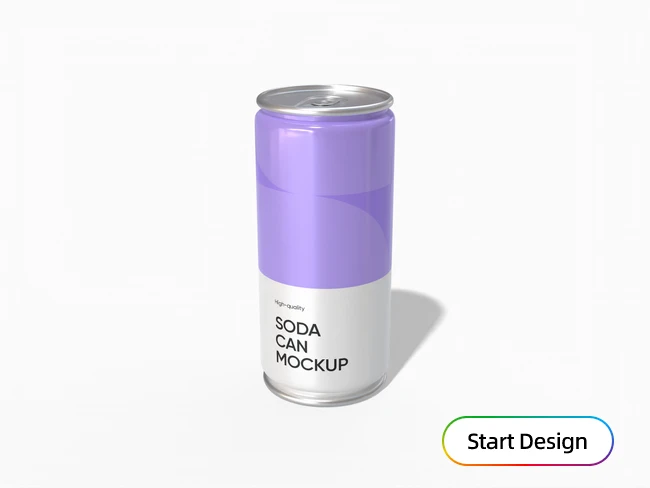
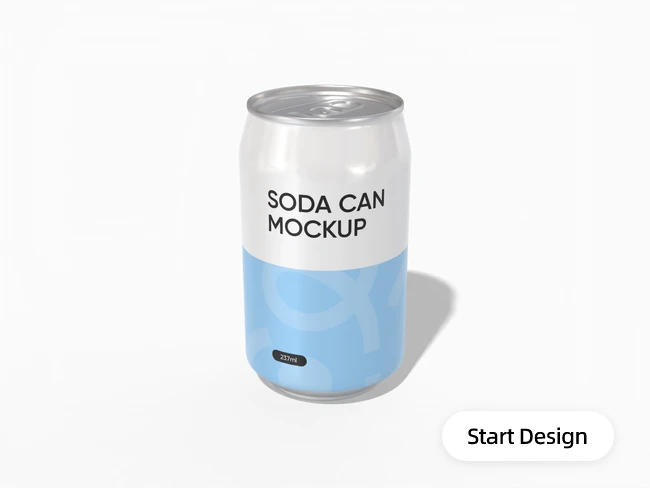
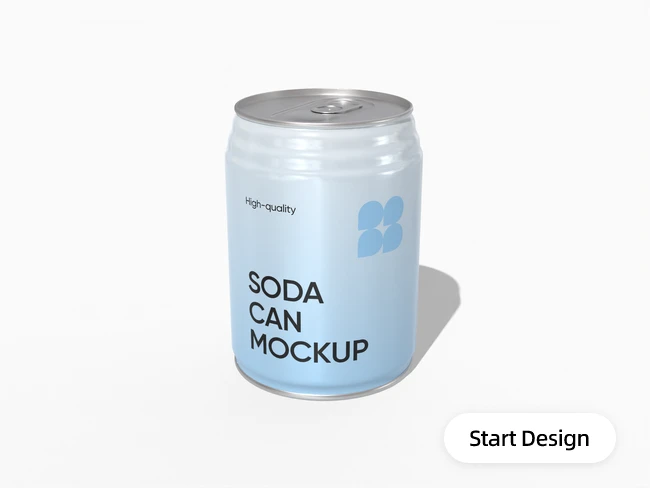
Step 3: Use AI Tools to Find Design Inspiration
In the age of AI, utilizing artificial intelligence to swiftly uncover design inspiration and ideas is essential for streamlined design processes.
To accomplish this, simply click on Packify, an AI-powered packaging design tool, and engage in a dialogue with it to effortlessly obtain the solutions you’re looking for.
- Input Requirement One
Ocean soda, in tin cans, has a minimalist, modern design with orange patterns and a pink, yellow, and blue palette, contrasting with typical energy drink packaging. Unlike the sharper designs of an energy drink, this soda has a softer, more playful feel.
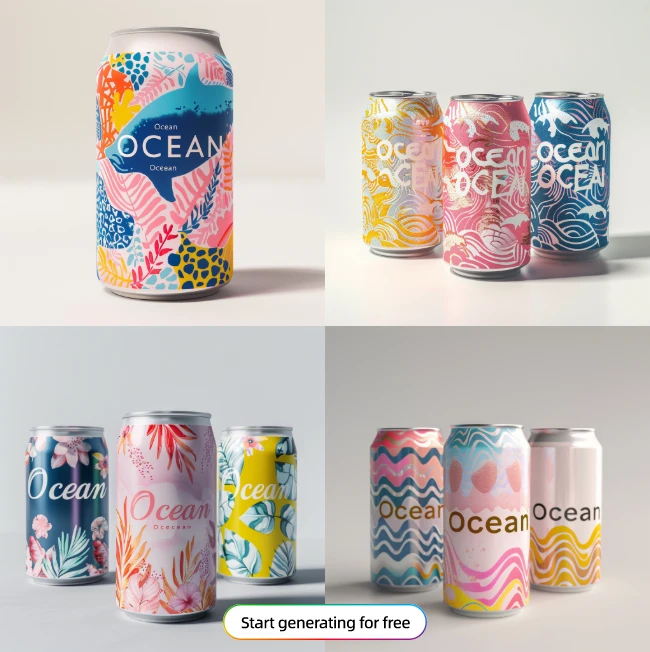
- Input Requirement Two
The brand "Ocean" uses vibrant colors and fruit slices, evoking freshness and summer vitality, a feel different from the often intense designs of an energy drink. This invites a refreshing experience, whereas an energy drink usually promises a boost.
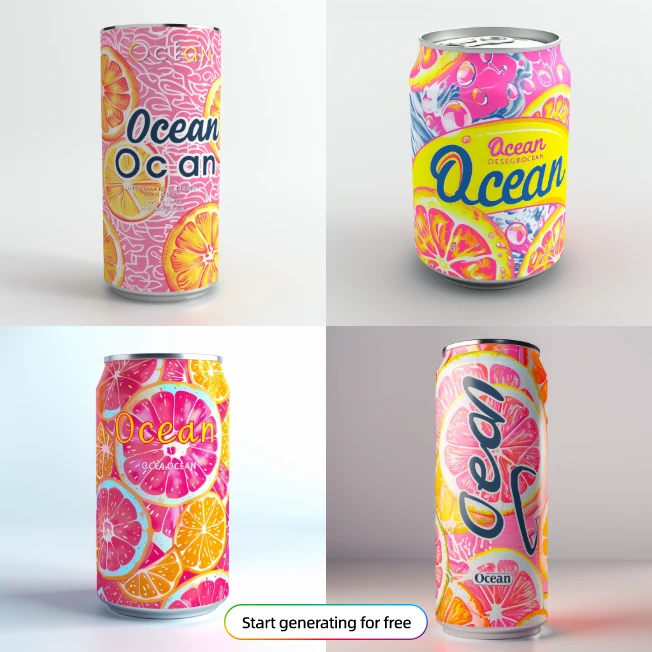
- Input Requirement Three
Ocean" embodies freshness and vitality through vibrant colors and enticing fruit, symbolizing a connection to nature and joyful indulgence. This contrasts with the typical focus of an energy drink which emphasizes power over natural elements. Unlike the functional approach of an energy drink, "Ocean" highlights a sensory experience.
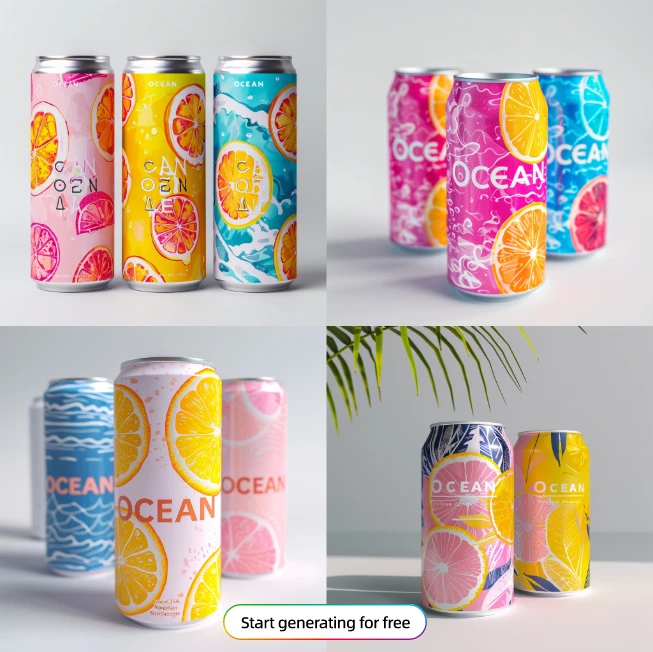
Step 4: Designing an Energy Drink Bottle with Your Selected Model
4.1 – Write down all the requirments.
Brand Name:Ocean.
Color:Pink, orange, creamy white, and purple.
Requirements: Dopamine-colored functional beverage with fruit images on the packaging and a minimalist color scheme.
4.2 – Choose a model and creativity for reference to start the design.
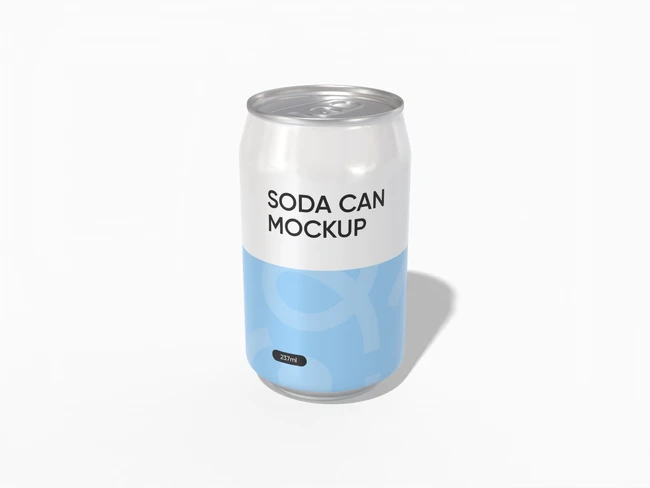
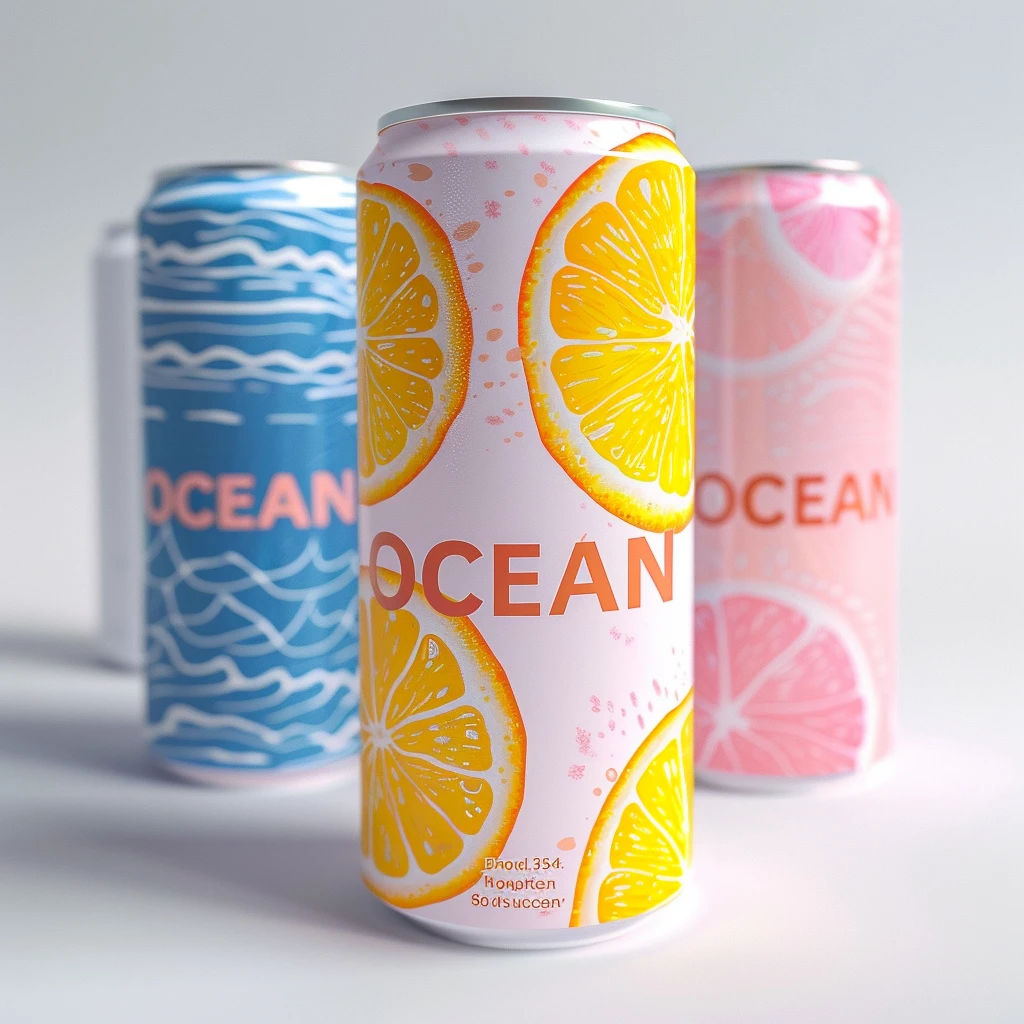
4.3 – Time to Design Our Energy Drink Bottle.
I usually search for graphic elements on design websites, then purchase them from corresponding paid sites. Or I create illustrations myself based on that style or hire a professional illustrator with a similar style.
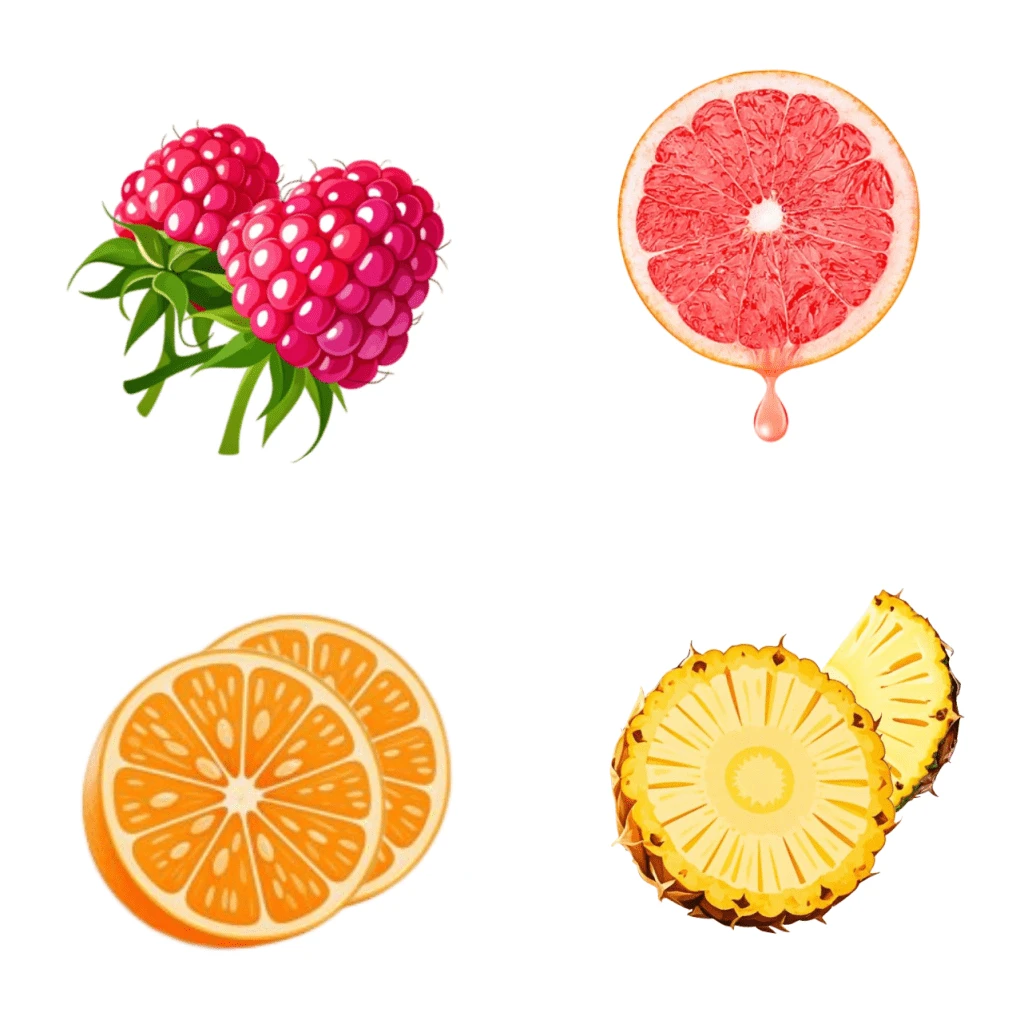
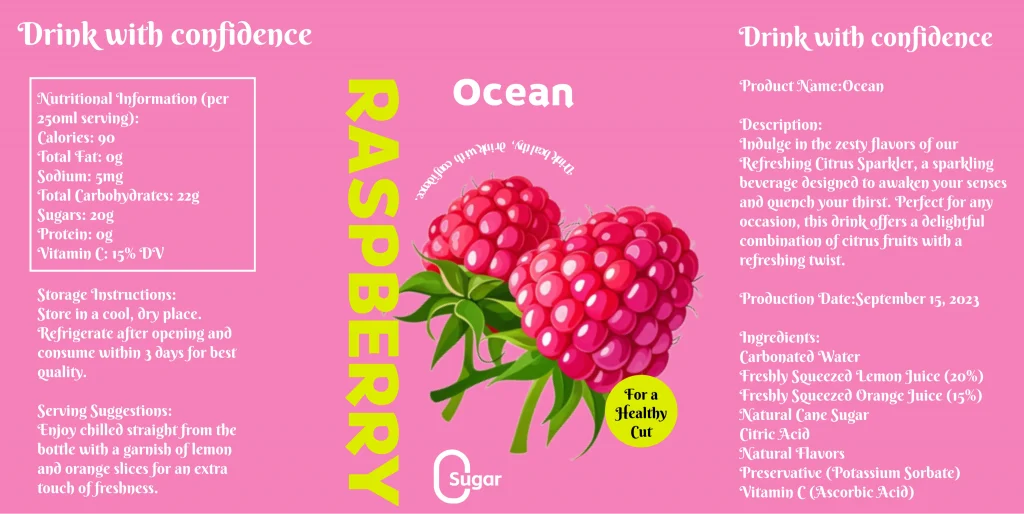
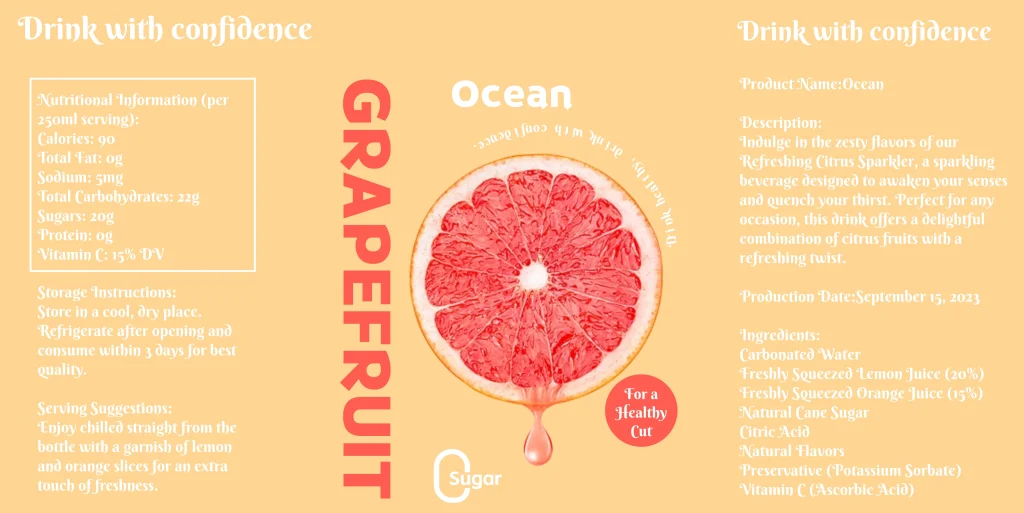
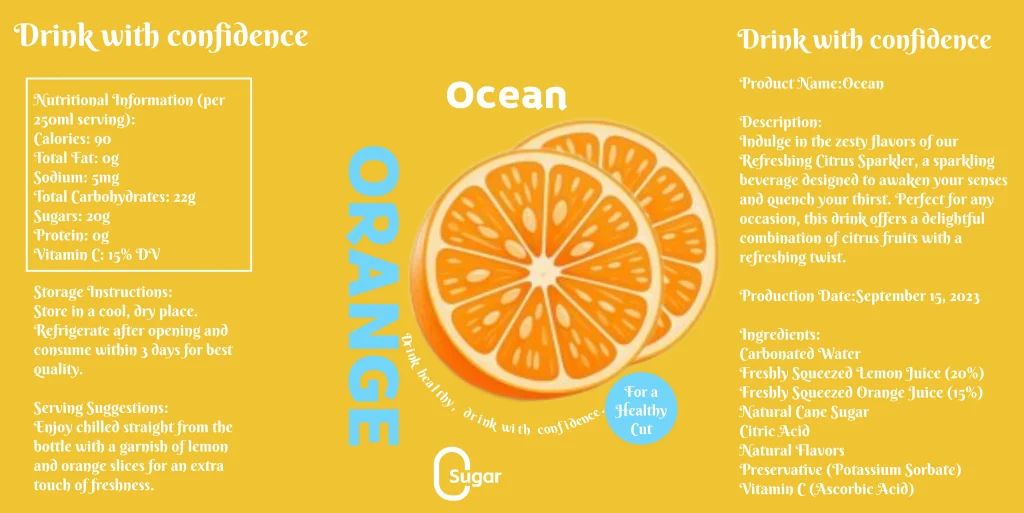
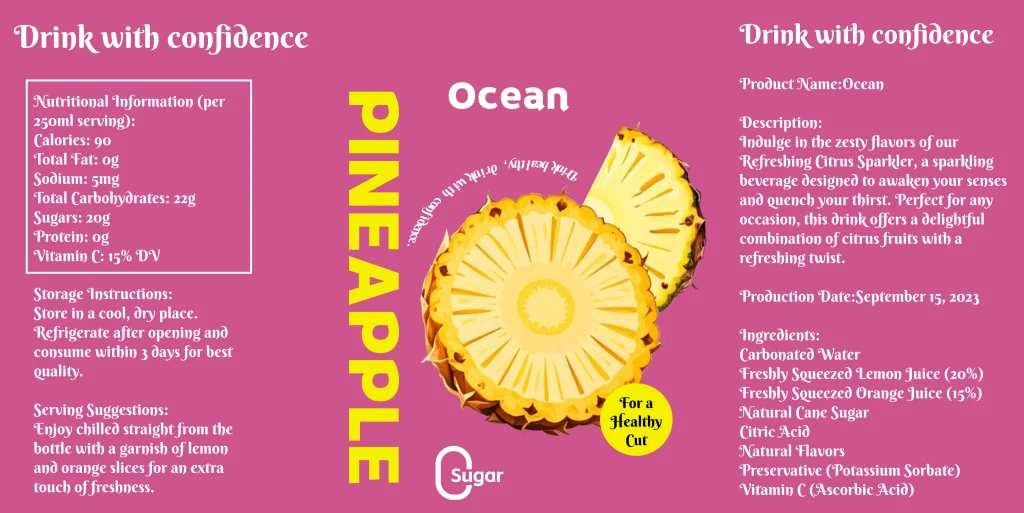
4.4 – Create the 3D mockup.
After designing the layout in software, export the design artwork and upload it to Pacdora.
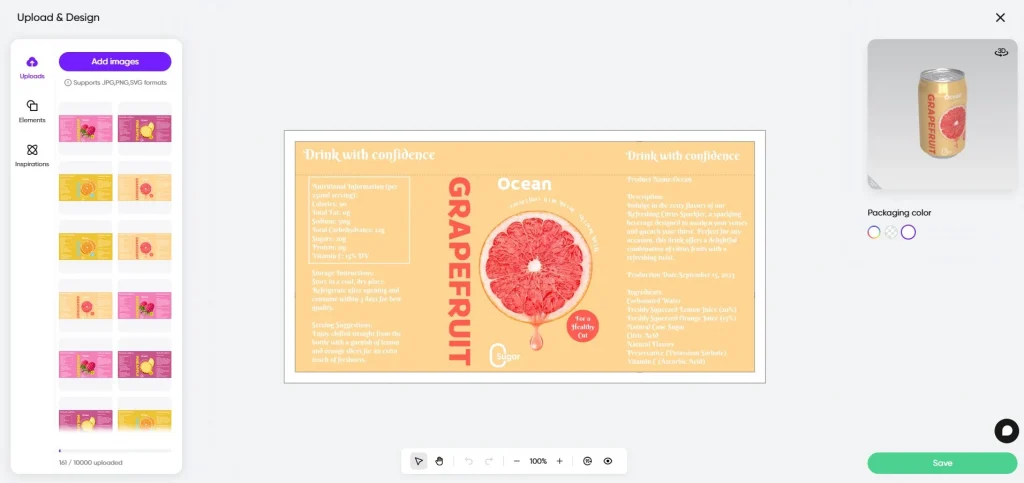
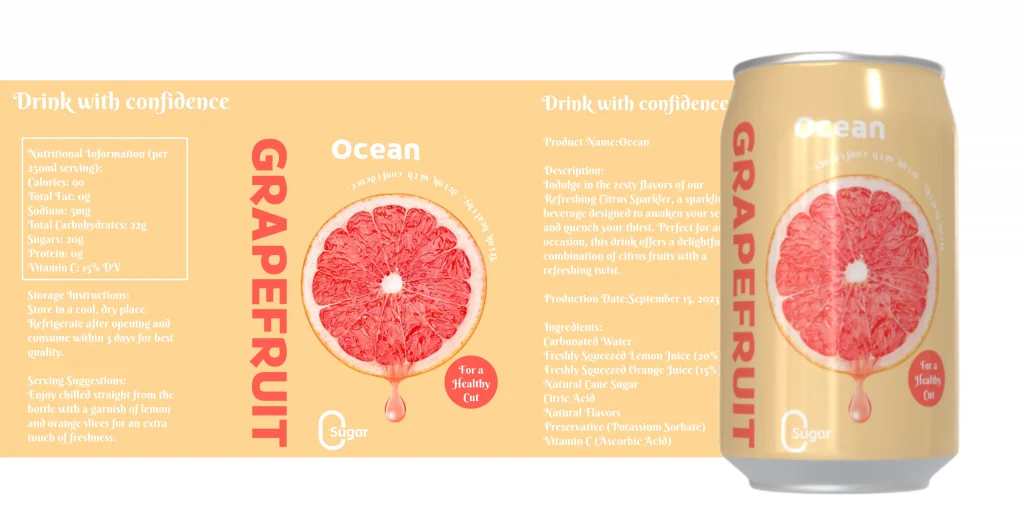
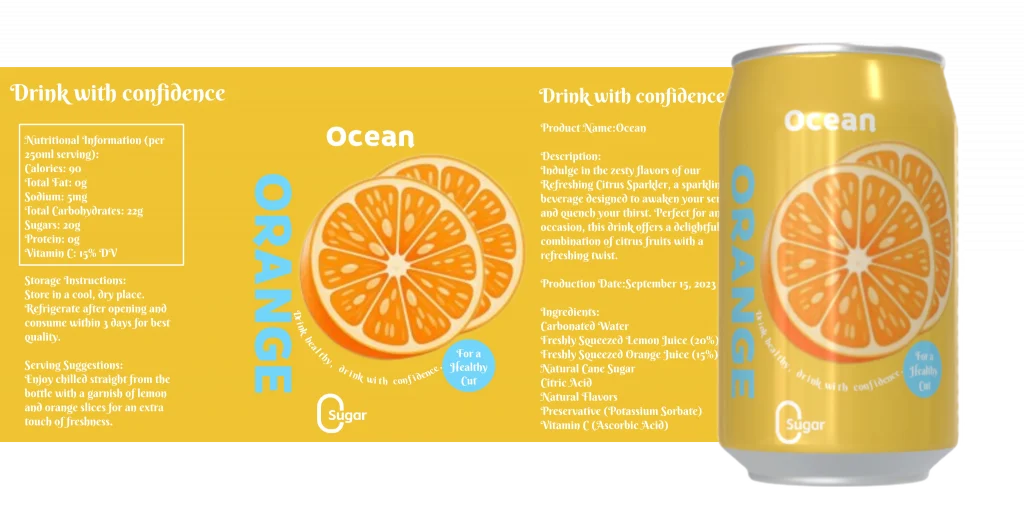
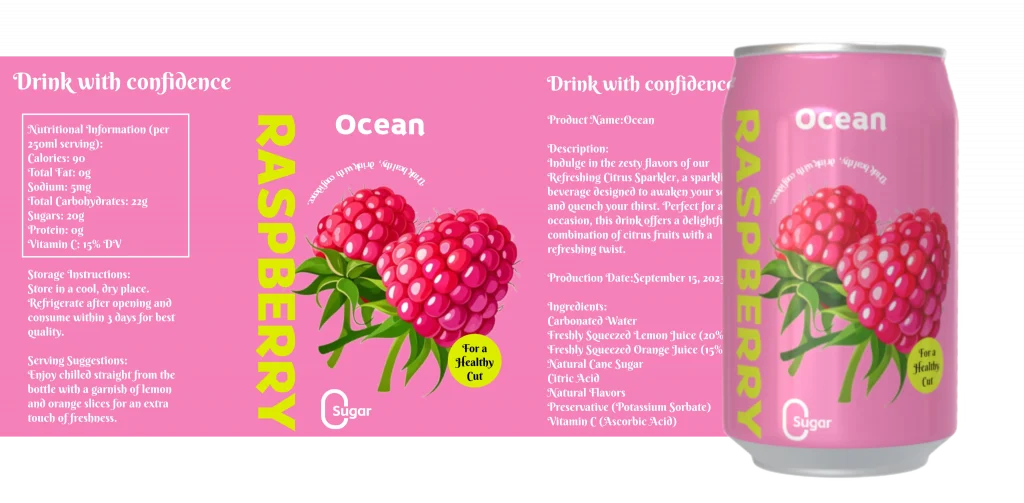
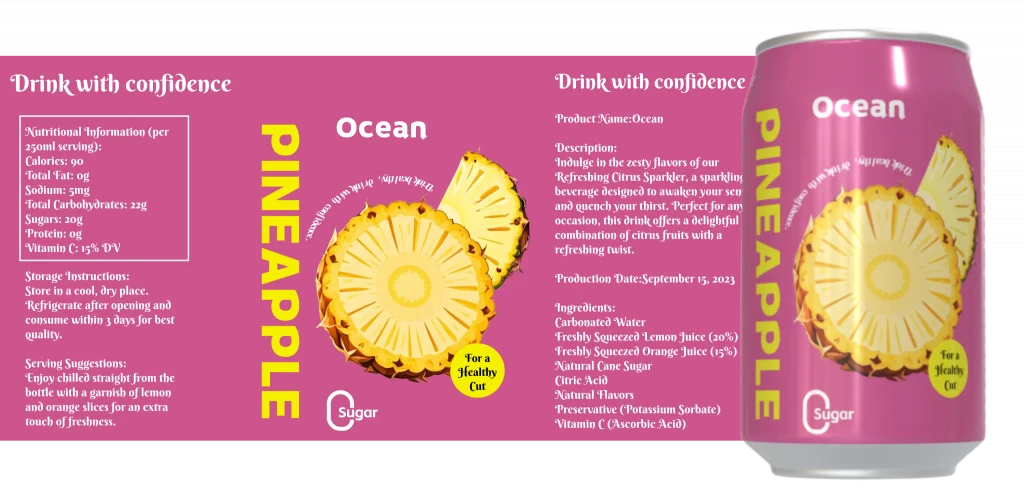
4.5 – Render the bottle of energy drink.
Click on “3D Design,” and you can begin rendering. In the 3D interface, you can either create your own scene or use templates. By adjusting some element colors, you can quickly complete some 3D scenes.
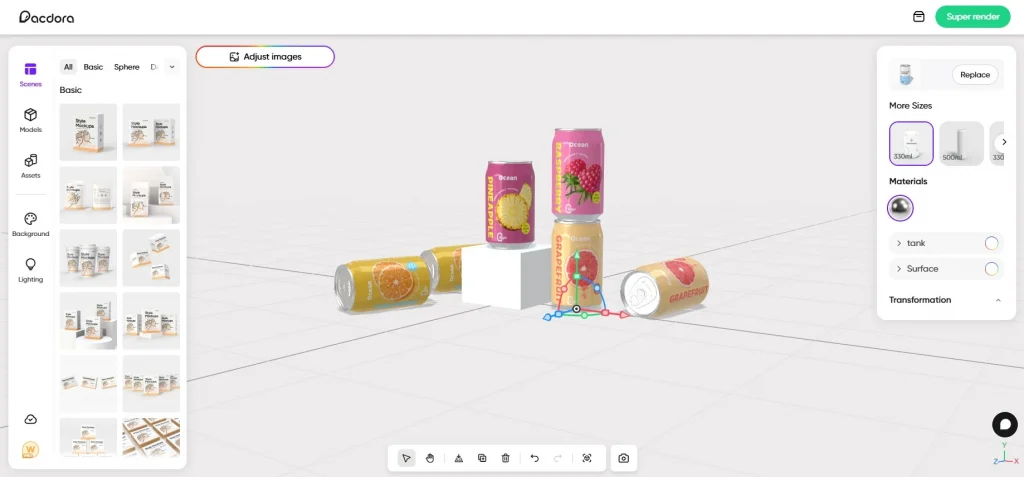
Here are a few renderings I created in just three minutes using the 3D scene.
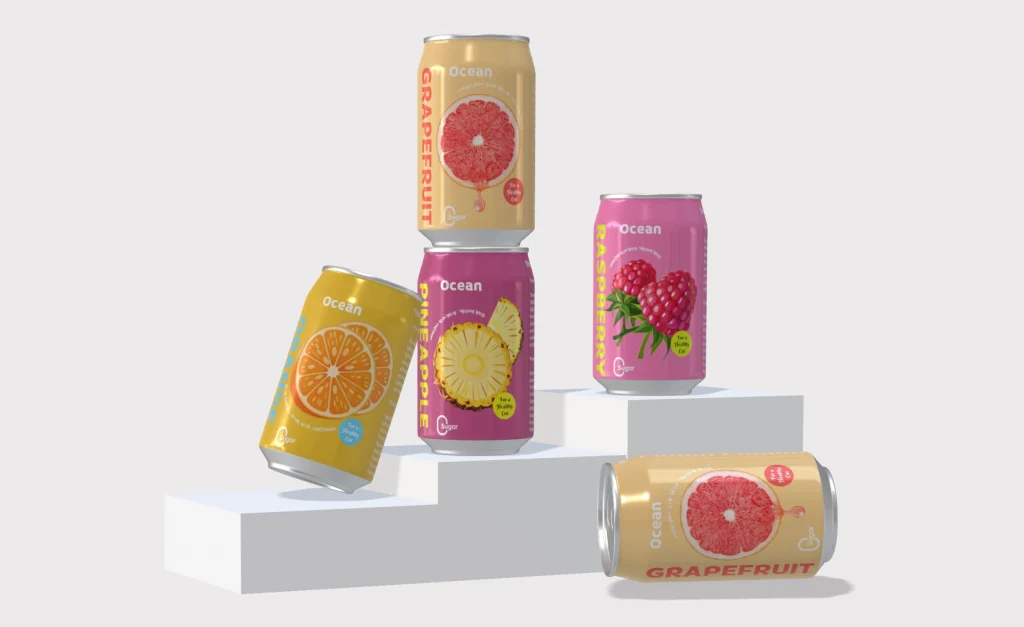
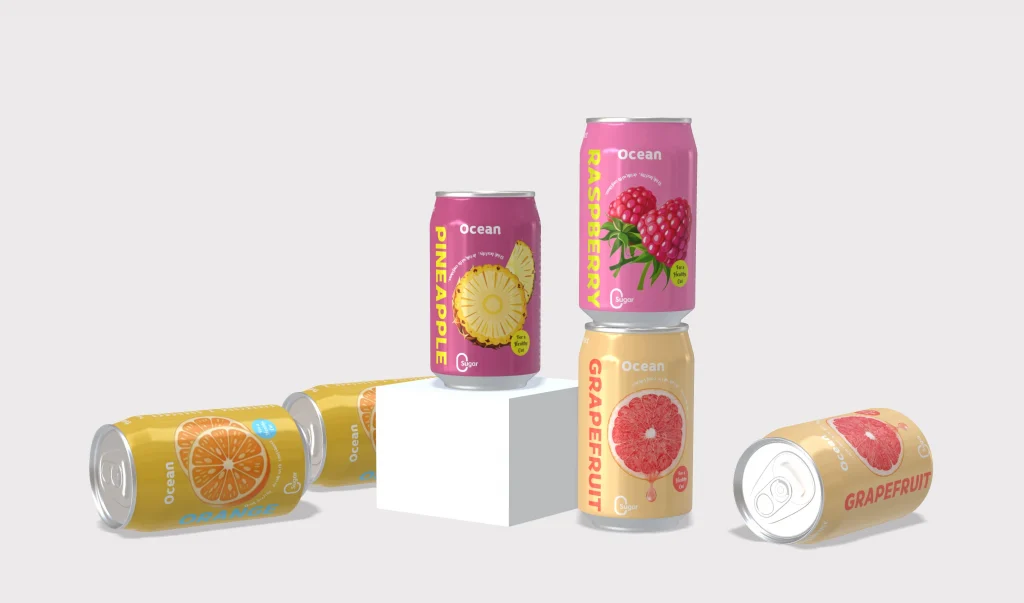
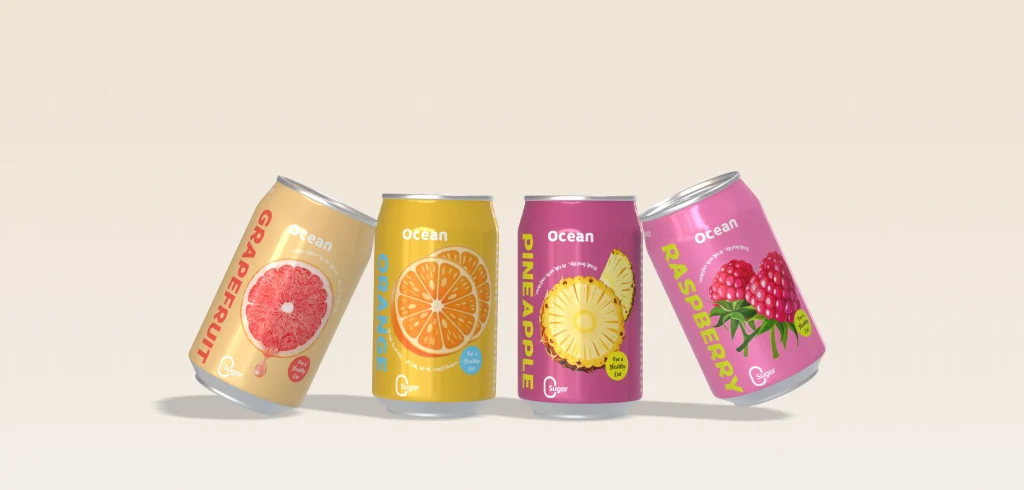
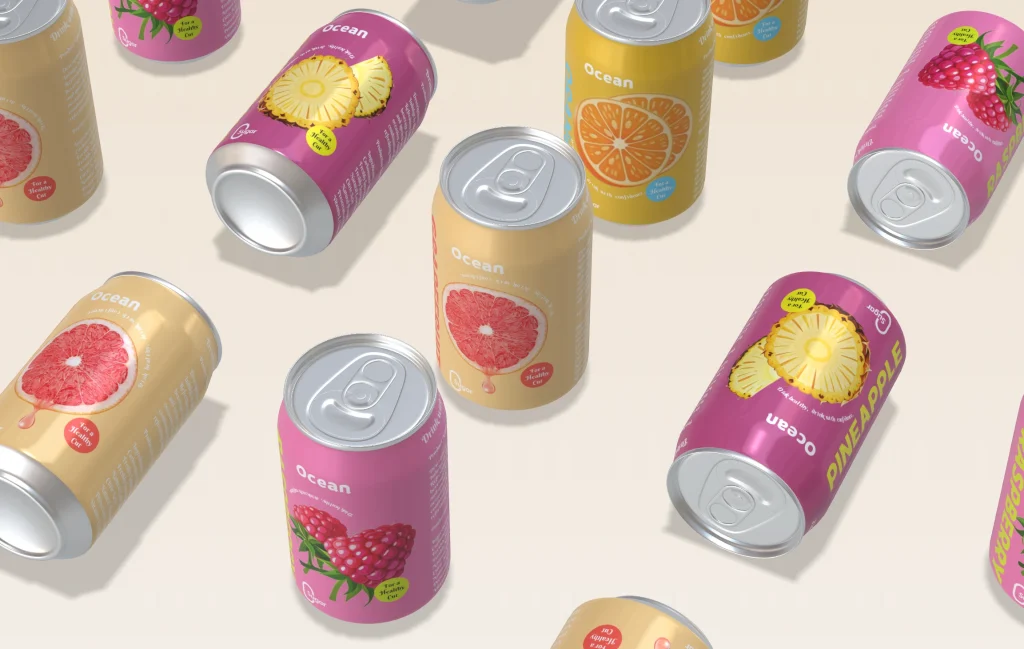
Step 5: Create more stunning renderings with AI
Creating 3D scenes requires a certain level of design skill, such as color adjustment and positioning.For many users, using AI tools for product photography is a more convenient option.These tools can truly allow anyone with internet access to easily produce high-quality renderings without extensive design expertise.
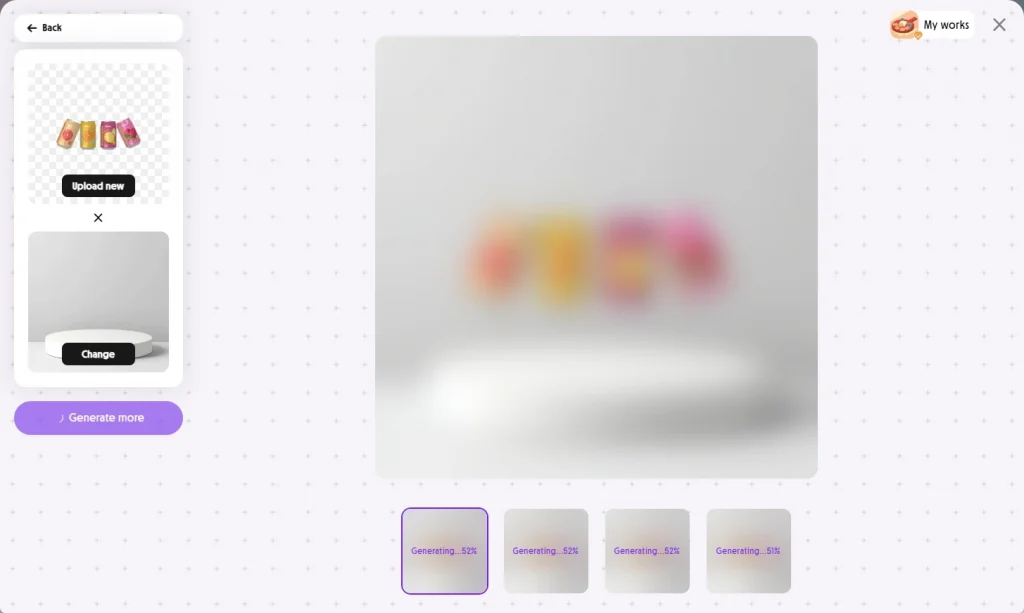
Simply choose your preferred style, click “Regenerate,” and receive stunning images within minutes that surpass traditional 3D tool results.
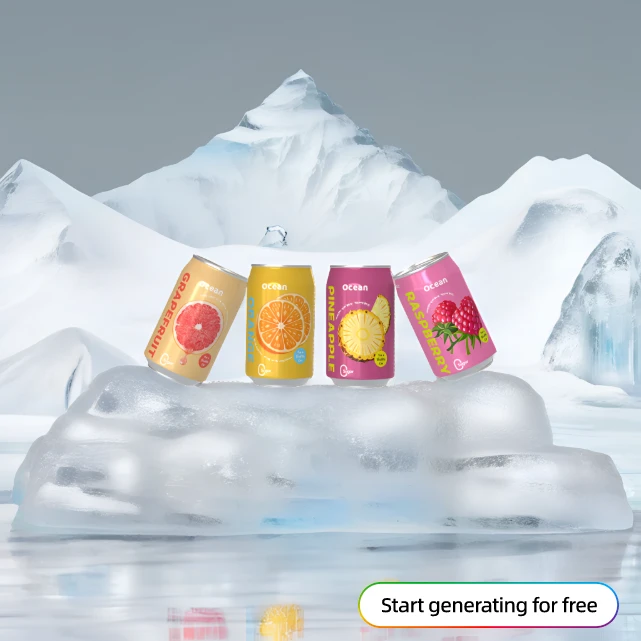
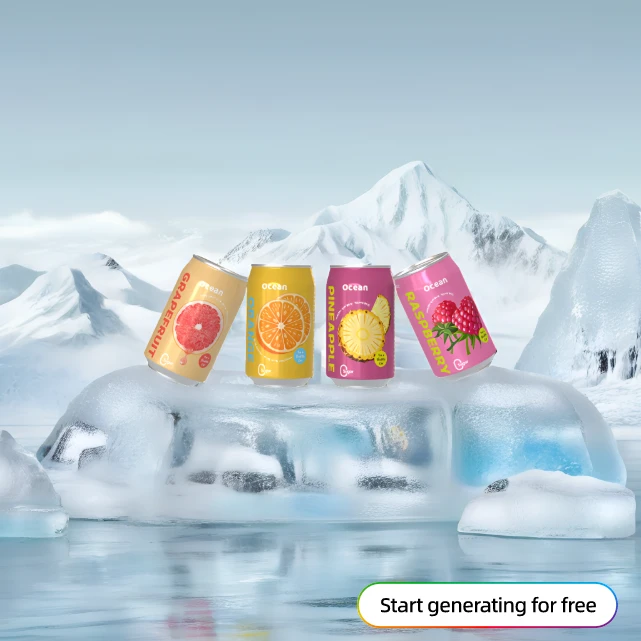
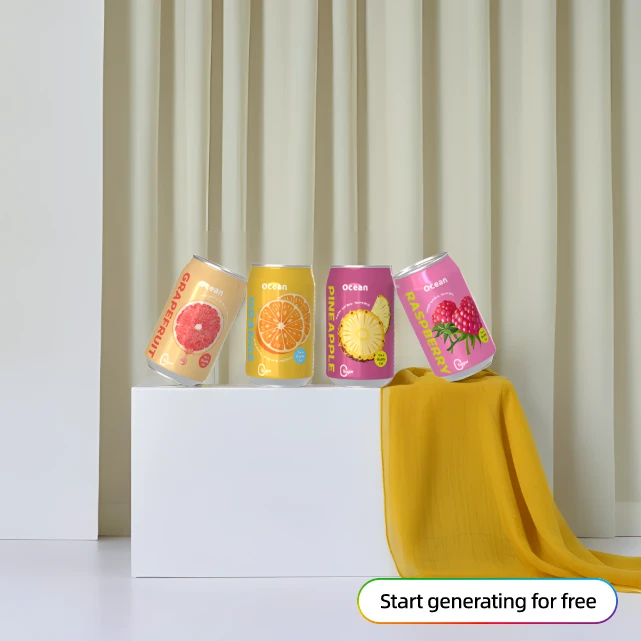
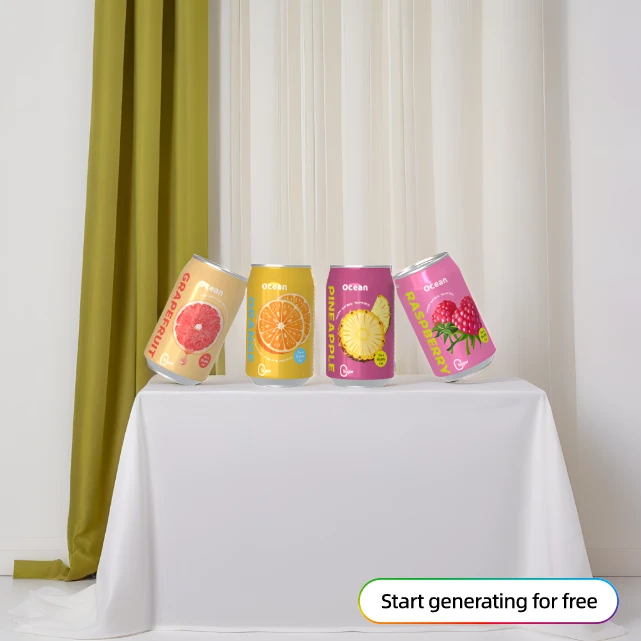
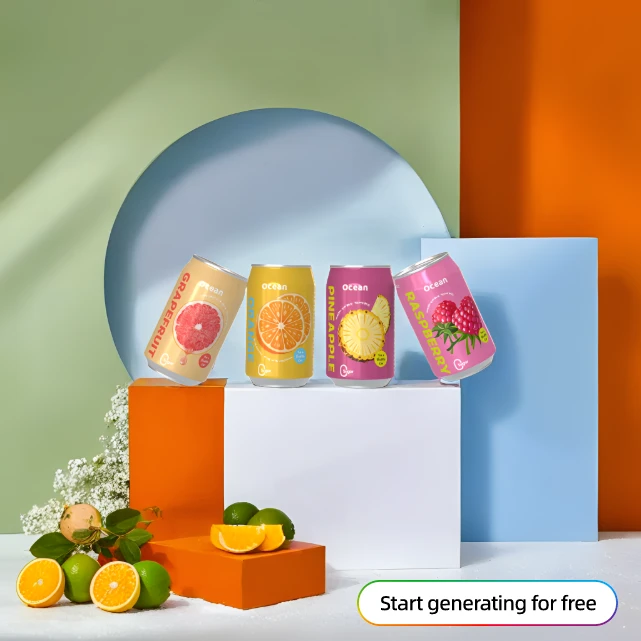
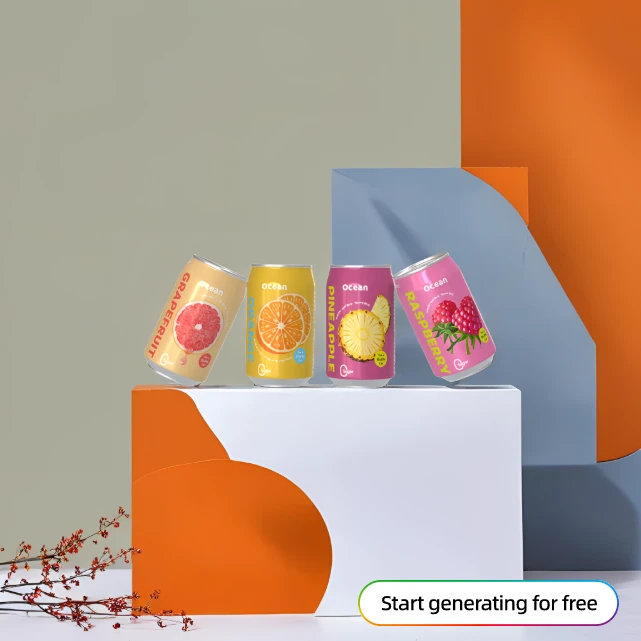
Summary
- Step 1: Learn about and understand the packaging design of well-known functional beverage brands.
- Step 2: Based on the research findings, locate an appropriate mockup on Pacdora.
- Step 3: Utilize AI Design tools to input your specifications, enabling the AI to swiftly generate creative inspirations.
- Step 4: Using the generated inspirational images, create your design and upload the layout to Pacdora to explore the 3D visualizations.
- Step 5: Employ Pacdora’s 3D rendering tool for final composite effects, along with the AI Photograph feature to produce realistic scene effect proposals.
Subscribe Us, and tell us what’t the next product you want to design, we will write the tutorials for you.
FAQs About Using AI for Energy Drink Bottle Packaging Design
- How are energy drinks packaged?
Energy drinks, like Monster, Rockstar, and Red Bull, are mainly sold in cans, whereas soft drinks, sports drinks, and water are usually in plastic bottles, though some energy drinks are also available in bottles.
- How to design an energy drink can?
Use our AI design tool to provide you with design inspiration.
- What is the most eco friendly drink packaging?
A study by the University of Southampton found that recycled aluminum cans are the least environmentally damaging single-use containers.

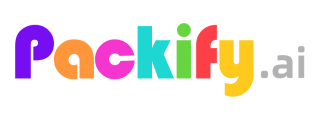
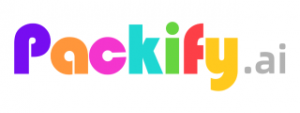
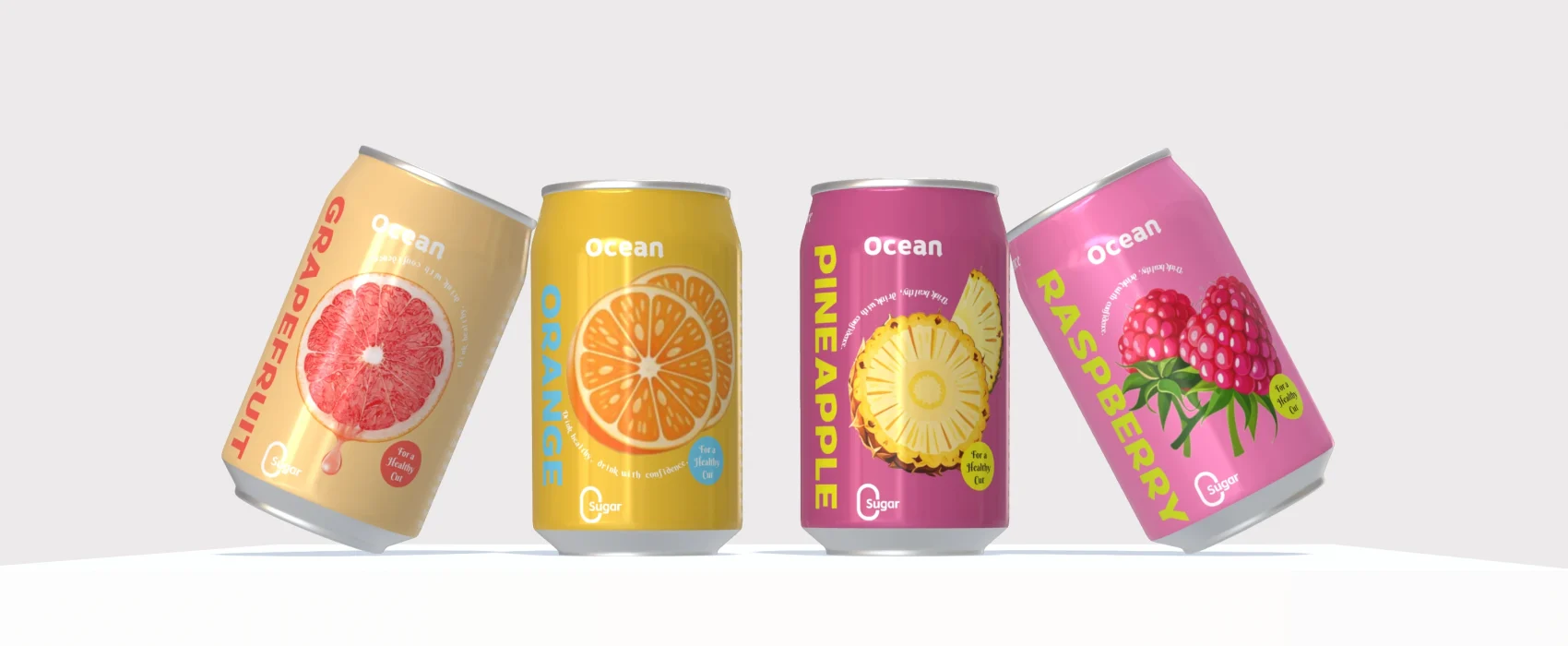
I enjoyed reading your piece and it provided me with a lot of value.
Thank you for writing this post. I like the subject too.
I can’t wait to implement some of these ideas. The content in this blog is truly eye-opening. The examples provided make it easy to understand. I’m bookmarking this for future reference. This article is a treasure trove of information! The examples provided make it easy to understand. I’m definitely going to share this with my friends.
Fantastic job covering this topic in such depth! I’m bookmarking this for future reference. Your writing style makes this topic very engaging. I can’t wait to implement some of these ideas. This article is a treasure trove of information! This blog stands out among others in this niche. I’ve been searching for information like this for a while. I enjoyed reading this and learned something new. Excellent post with lots of actionable advice! Great read! Looking forward to more posts like this.